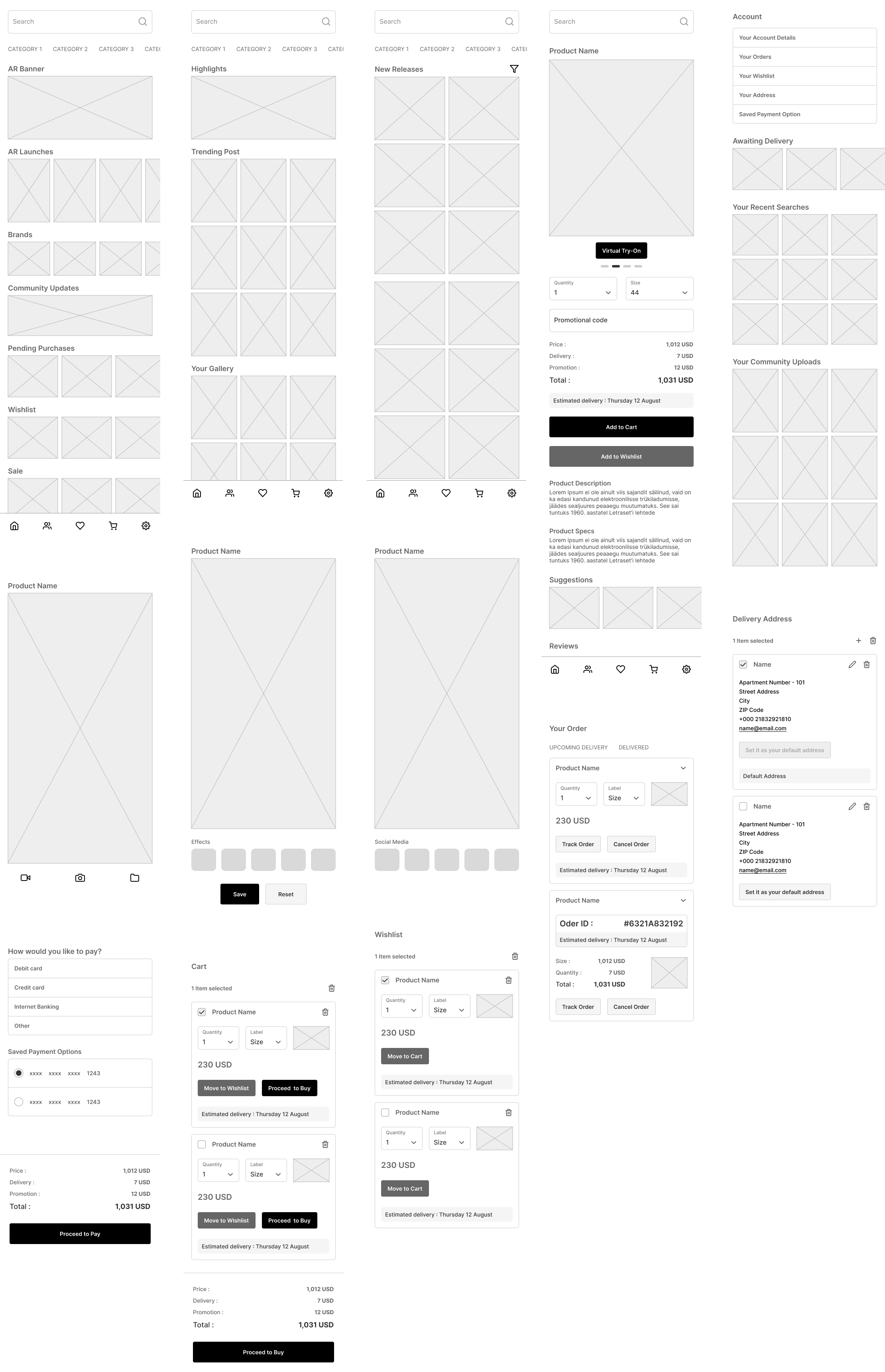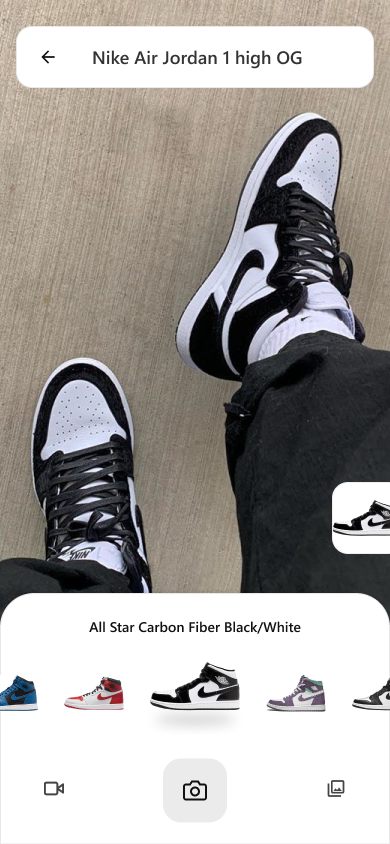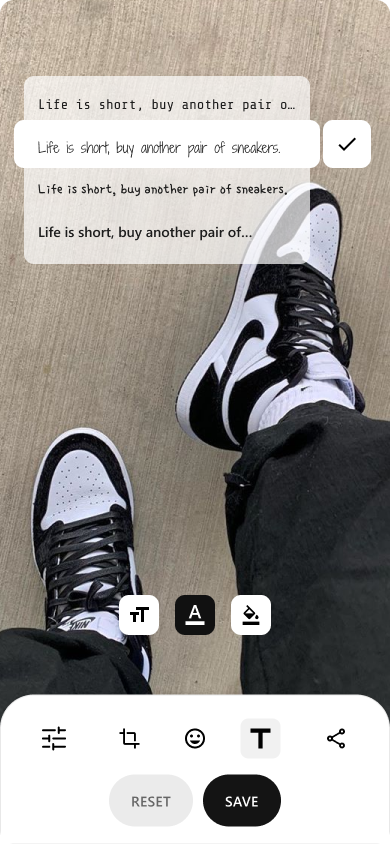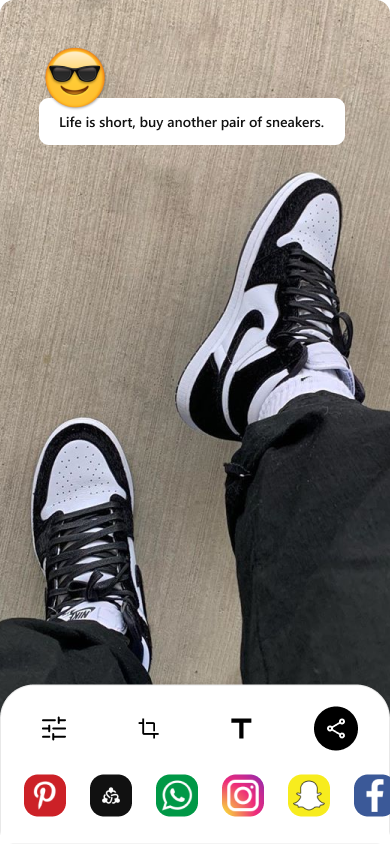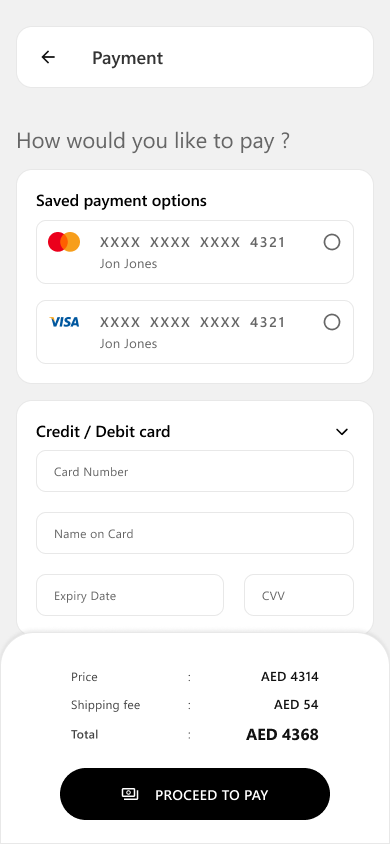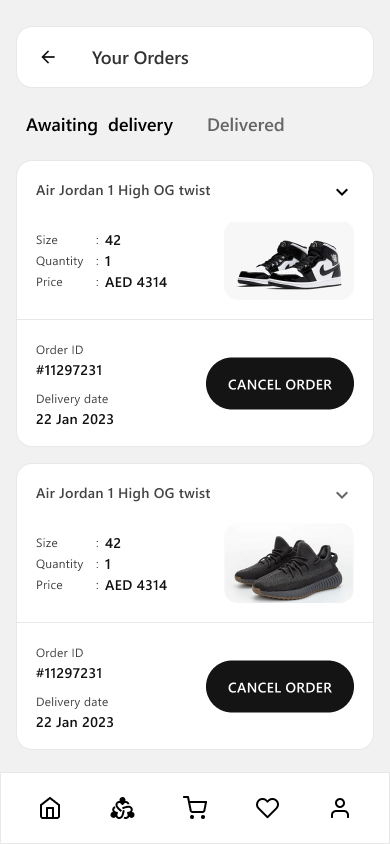Project Overview
A mobile shopping app that explores the potential of Augmented Reality (AR) in e-commerce to enhance the sneaker shopping experience.
The objective is to create an immersive and interactive platform where users can virtually try on products, make more confident purchase decisions, and engage with a like-minded community. By combining AR technology with social features and reward mechanisms, the app aims to showcase how AR can transform online shopping into a more personalized, engaging, and satisfying experience.
Market Research
Sneakers are classified as shoes made especially for playing sports or engaging in other forms of physical activity. They are referred to as the category of footwear that has a rubber or synthetic sole that is flexible. Cloth, leather, or synthetic alternatives make up the upper part of the shoes. These shoes are frequently worn as daily shoes
Why is the demand for sneakers growing at a rapid pace?
Along with people's better lifestyles and rising disposable income, the demand for more comfortable and cutting-edge footwear is one of the main drivers in the growth of the global sneakers industry. Additionally, there are countless chances for market expansion due to the growing preference for stylish, branded, and high-fashion footwear among all age groups and the accessibility of easily customizable and cutting-edge features in footwear. One of the reasons sneakers are such a popular option is the freedom to move quickly and safely when walking, running, and jumping. Flexibility is essential, and sneakers can be styled for any occasion.
What are the factors that influence consumer interest?
Consumers' decisions to buy sneakers are influenced by the fashion choices of the celebrities and athletes they admire. Since different actors and athletes are well-known in different countries and regions, manufacturers of footwear and other athleisure clothing use different brand ambassadors in various nations according to their level of popularity. Social media also plays a significant role in brand perception.
User Research
Interviews with stakeholders were conducted to understand the users' needs, expectations, pain points and concerns. It was also designed to gain insights into the social media and online behaviours of potential users.

Persona
Personas were developed to represent the user group and their pain points. This helps in focusing on who the target audience is, their expectations, concerns, and motivations.
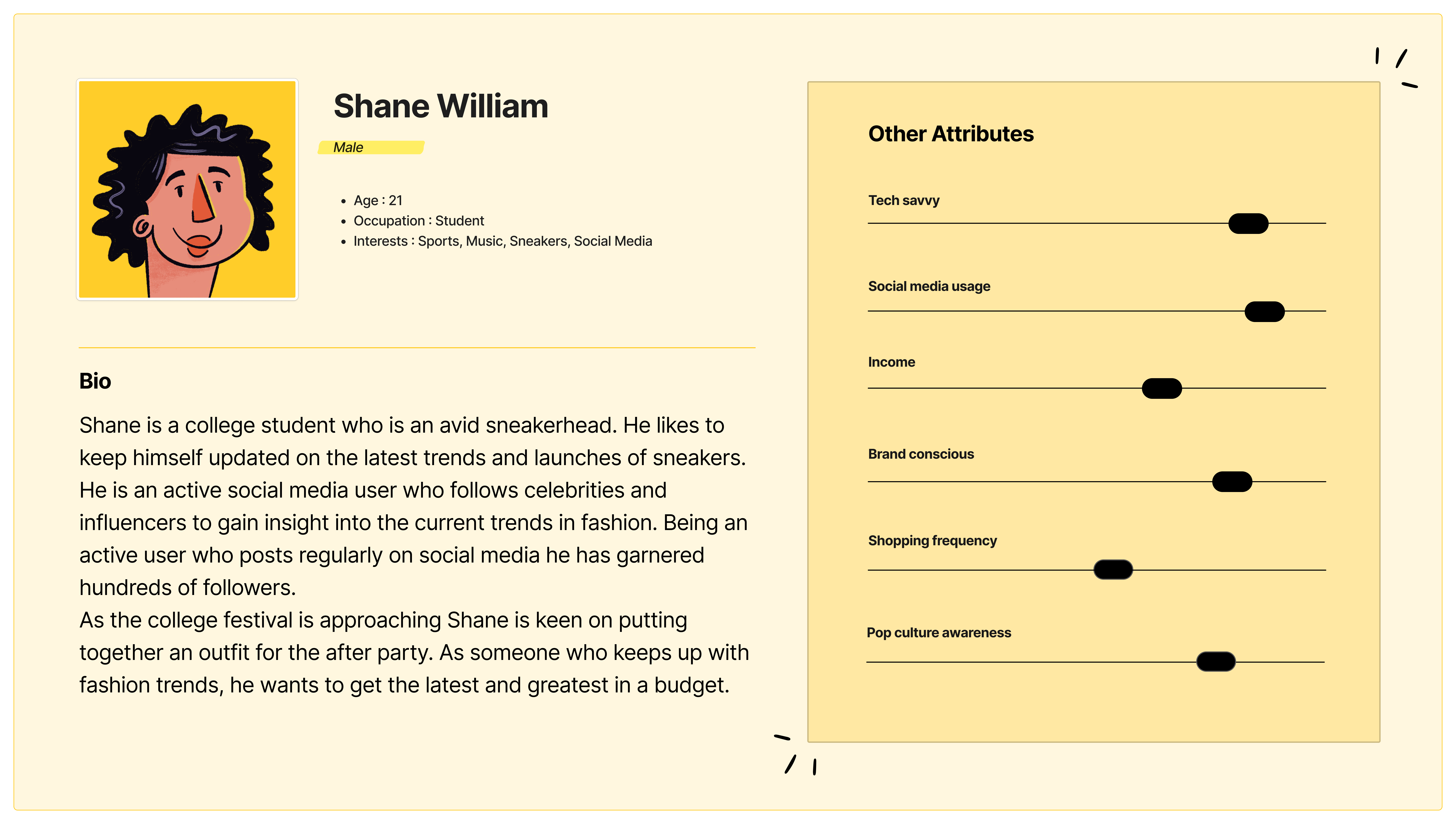
Empathy Map
Empathy map is used to gain deeper insights into the customers. Much like user personas, it helps in narrowing down the target group's thoughts, feelings, motivations, desires, and needs.
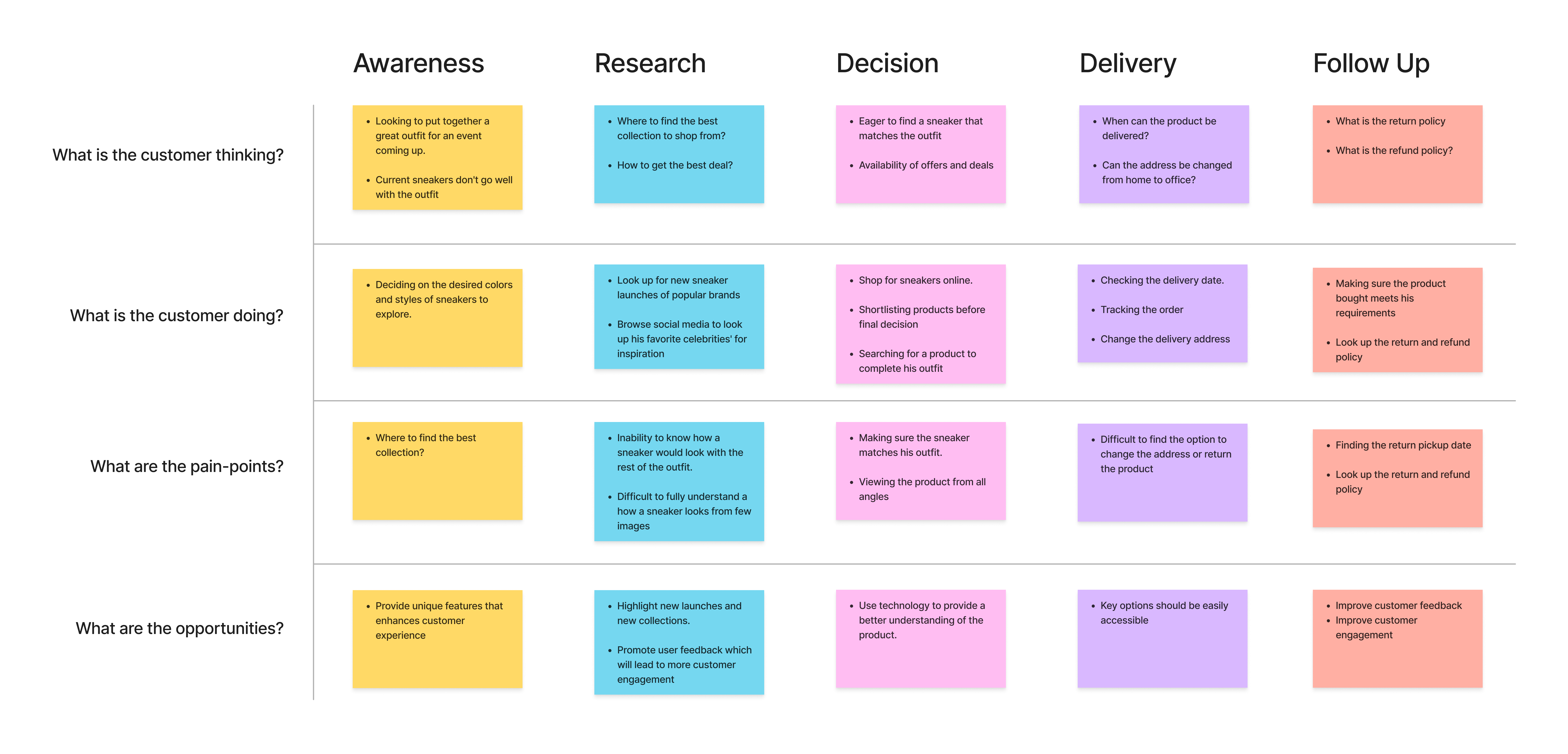
User Flow
User flows break down the tasks performed by a user. This helps in visualizing wireframes.
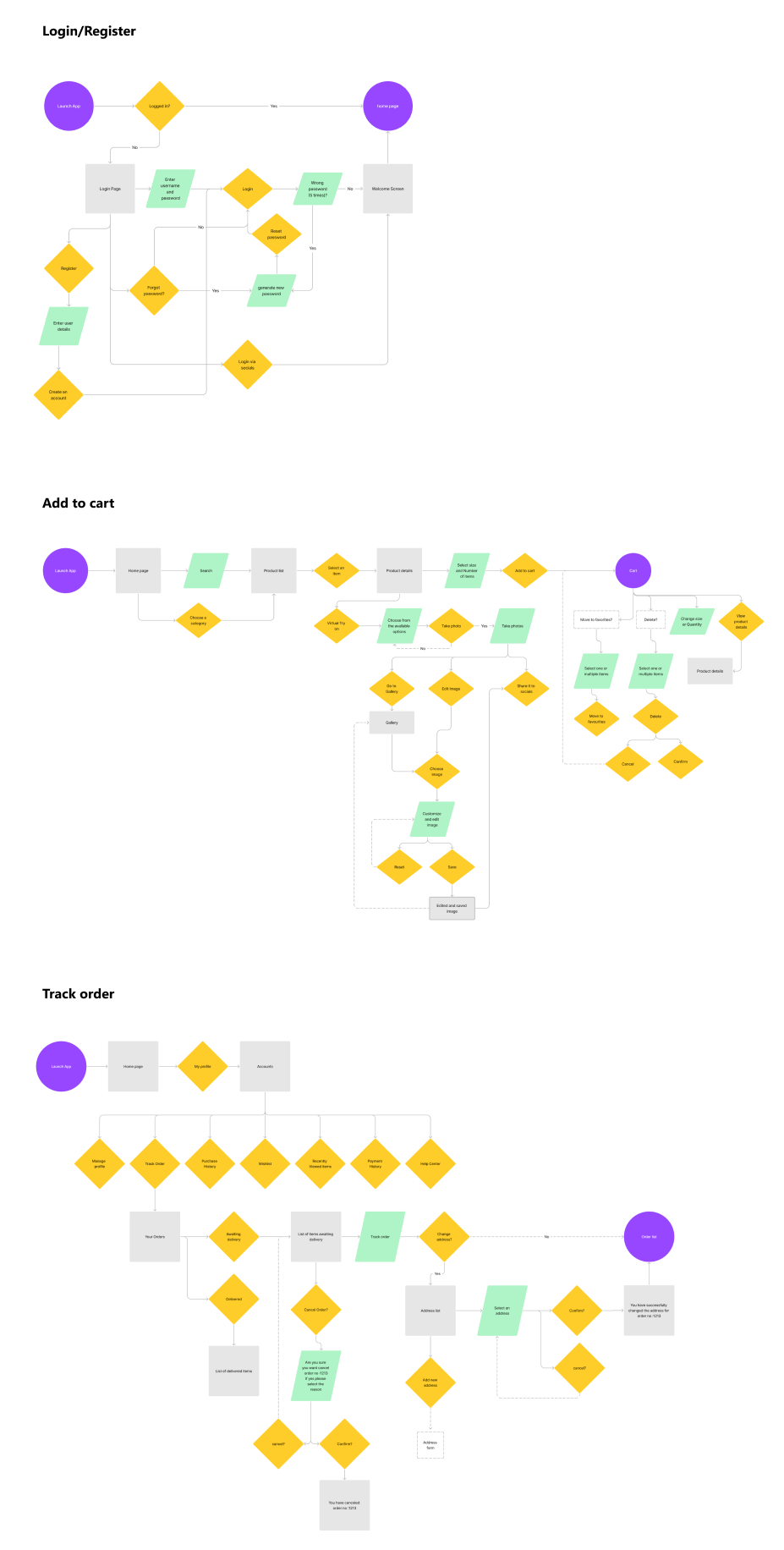
Information Architecture
Using insights from my research and collected data, I created the Information Architecture to guide the app’s development. It establishes core features and structure, improves the user journey and usability, and ensures scalability and consistency.

Ideation
In the process of ideation, it was important to answer a few questions.
- How to improve customer engagement?
- How to utilize social media behaviors of users to improve overall engagement?
- How to enhance the shopping experience for users?
- Would it be possible to provide customers with better information so that they can make better purchases?
Wireframing the solution
I developed low-fidelity prototypes to test out the workflows.
